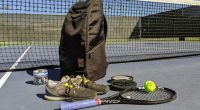The Importance of Waxing Your Snowboard: How to Properly Wax Your Base

Out of all the snowboard tuning processes, waxing is arguably the most important and rewarding one you can learn to do yourself at home. And if you can iron a shirt without burning the house down, you can probably wax your snowboard successfully by yourself. All you’ll need is some wax from a snowboard accessories store, and to follow the instructions I’ll list here, and you’ll be good to go. But before I get into the instructions, let’s talk about how often you should wax your snowboard and what you’ll need to properly wax it.
Some people claim that you should wax your snowboard after every 3 days, however, the frequency of waxing it will depend on a couple of factors, such as how often you ride, the construction of your snowboard’s base, and the conditions you’ll be riding in. There are two basic types of base constructions – extruded and sintered. Sintered bases are more porous which makes them absorb more wax. Due to this, waxed sintered boards run faster and smoother than extruded-base snowboards. However, an unwaxed sintered base snowboard will run slower than an unwaxed extruder snowboard base, meaning you’ll have to pay more attention to sintered bases than extruder bases.
Now let’s get to the waxing part. In order to properly wax your snowboard, you’ll need a couple of snowboard accessories, including wax, iron, scraper, structuring brush, and cloth. Once you get all of these, you can start the process by removing the bindings in order to avoid damaging the board. Then, you need to clean the base and make sure it’s free of dirt and old wax so that the fresh wax can be properly absorbed. You can accomplish this by either using the hot scrape method or by using a base cleaner and cloth. The hot scrape method involves using an iron to apply a layer of wax then immediately scrap it off to remove the grime from the pores.
Then, you have to apply your wax. Waxes can be either warm or cold, depending on the temperature of snow you’ll be riding on. If you’re riding in mixed conditions, you should consider picking an all-temperature wax. Once you got yourself a wax, you need to melt it using either a normal clothes iron (you won’t be using this iron for clothes anymore), or a specific waxing iron. You’ll have to warm the iron up and then hold the wax against it until it starts melting the wax at a slow drip-rate. As the wax drips onto the board, move it around the edges, as they’re usually the driest part, then zigzag up in the middle of the board.
Next, put the iron on the board’s base and move it around circularly. Cover the entire surface of the base and make sure to keep the iron moving (just like when ironing clothes) so the board doesn’t get too hot and damage the base. Once you apply the wax, let it dry and cool for about 15-30 minutes. Once cool, hold the plastic scraper at a 45° angle and work from nose to tail scraping off the wax. Try doing long and continuous strokes for a smooth base. Any extra wax left on the rails will make your edges ineffective, so use the notch of the scraper to remove stray wax.
Lastly, using the structuring brush to brush the base from nose to tail firmly in order to remove excess wax and to expose the structure of the base, which will make your board faster and smoother. Now your snowboard is good to go, and as good as new!



